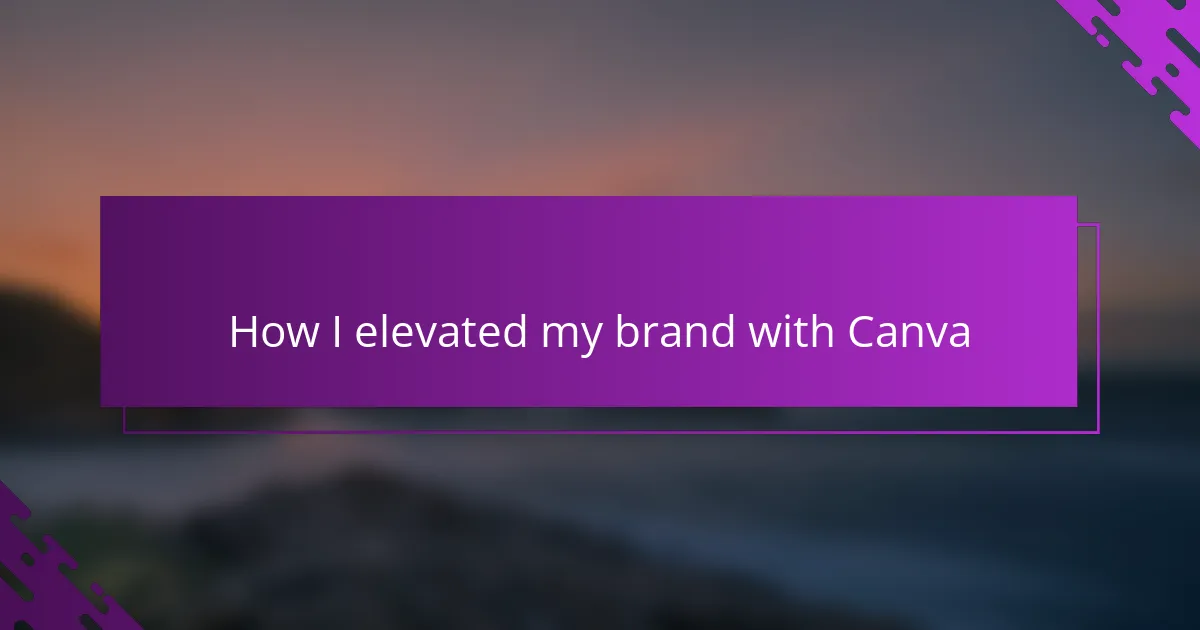Key takeaways
- Personal blogging thrives on authenticity, focusing on genuine storytelling and connection rather than perfection.
- Canva enhances blogging by allowing users to create visually appealing content easily, fostering personality and creativity.
- A consistent brand style, established through specific colors and fonts, builds trust and emotional connection with readers.
- Utilizing and customizing Canva templates effectively can save time while maintaining a professional and cohesive visual identity.
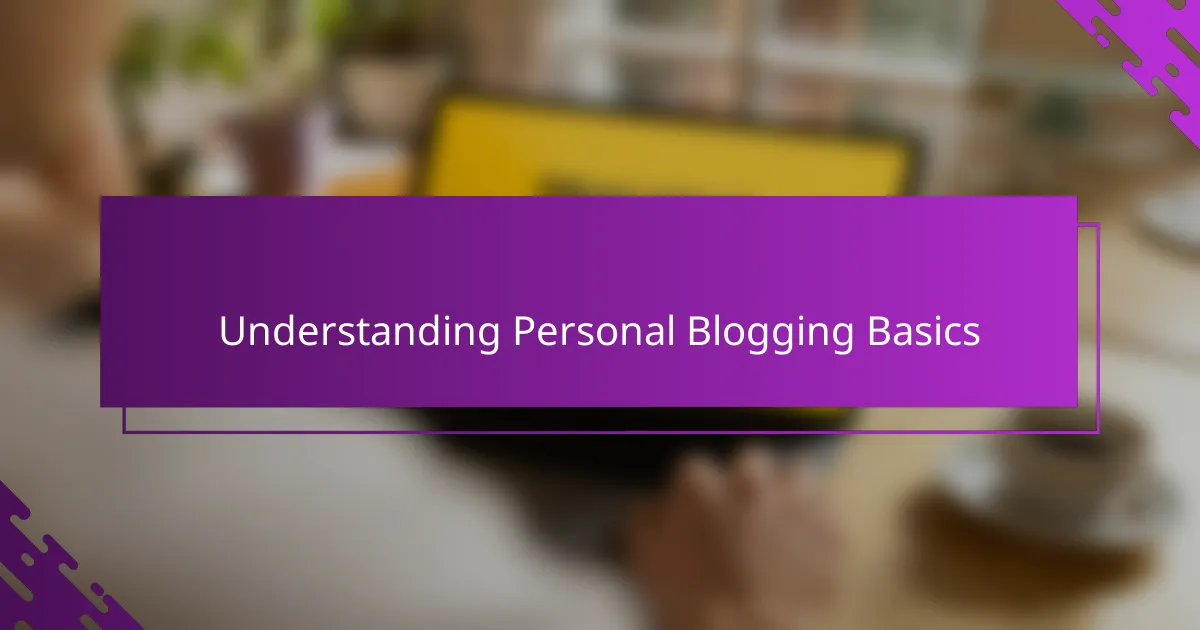
Understanding personal blogging basics
When I first started personal blogging, I realized it wasn’t just about writing what I liked—it was about creating a space that reflected my true self. I asked myself, “What stories am I eager to share, and why do they matter?” This question helped me focus on authenticity, which I believe is the heart of every successful personal blog.
Understanding the basics meant getting comfortable with the idea that personal blogging is a mix of storytelling and personality. It isn’t about perfection; it’s about connection. I’ve found that sharing my honest thoughts, even the messy or uncertain ones, invites readers in and builds trust in a way polished content never could.
Have you ever wondered why some blogs feel like chatting with a friend over coffee? That’s personal blogging at its core—creating a genuine voice that resonates. For me, embracing this made all the difference in how I approached my content and connected with my audience.
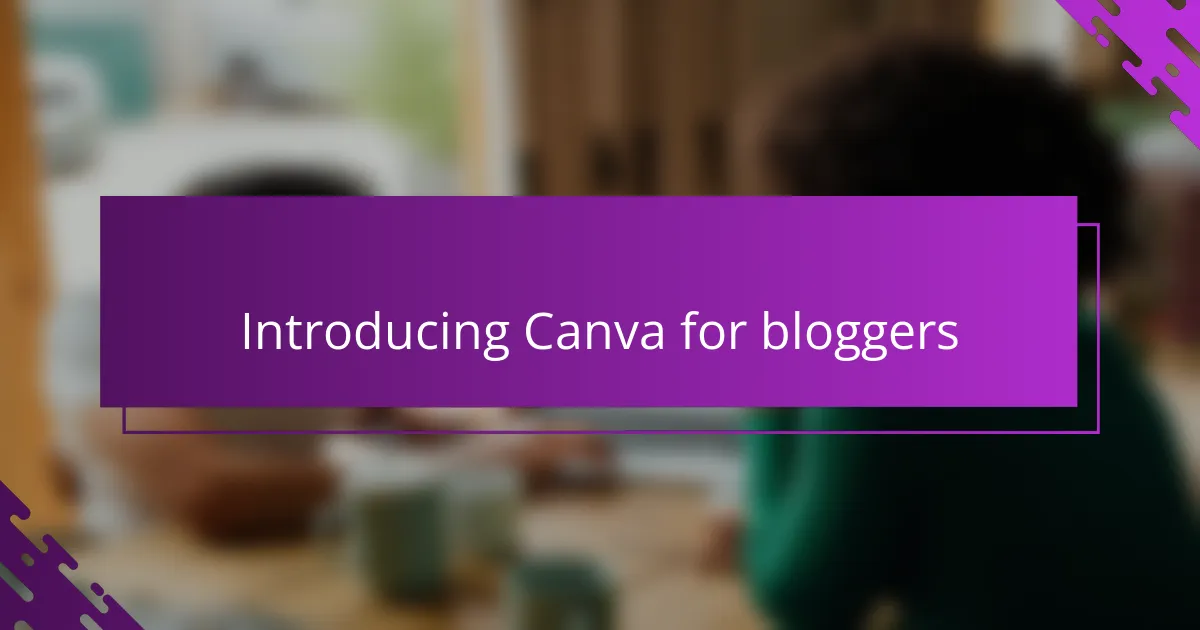
Introducing Canva for bloggers
When I first discovered Canva, it felt like finding a secret weapon tailored just for bloggers like me. Have you ever struggled with making your posts visually appealing but lacked the design skills? Canva changed that for me by offering simple, drag-and-drop tools that made creating stunning visuals surprisingly easy.
What I love most about Canva is how it allows my personality to shine through every design. Instead of relying on generic stock images, I could craft custom graphics that matched my blog’s vibe perfectly. It was like the missing piece in my blogging puzzle, helping me express myself more clearly and attract readers who genuinely connected with my style.
Using Canva didn’t just elevate my blog’s look—it boosted my confidence too. When your visuals reflect who you are, you start to feel more proud and motivated to share your stories. Isn’t it amazing how the right tool can unlock new creative energy and make blogging feel even more fulfilling?
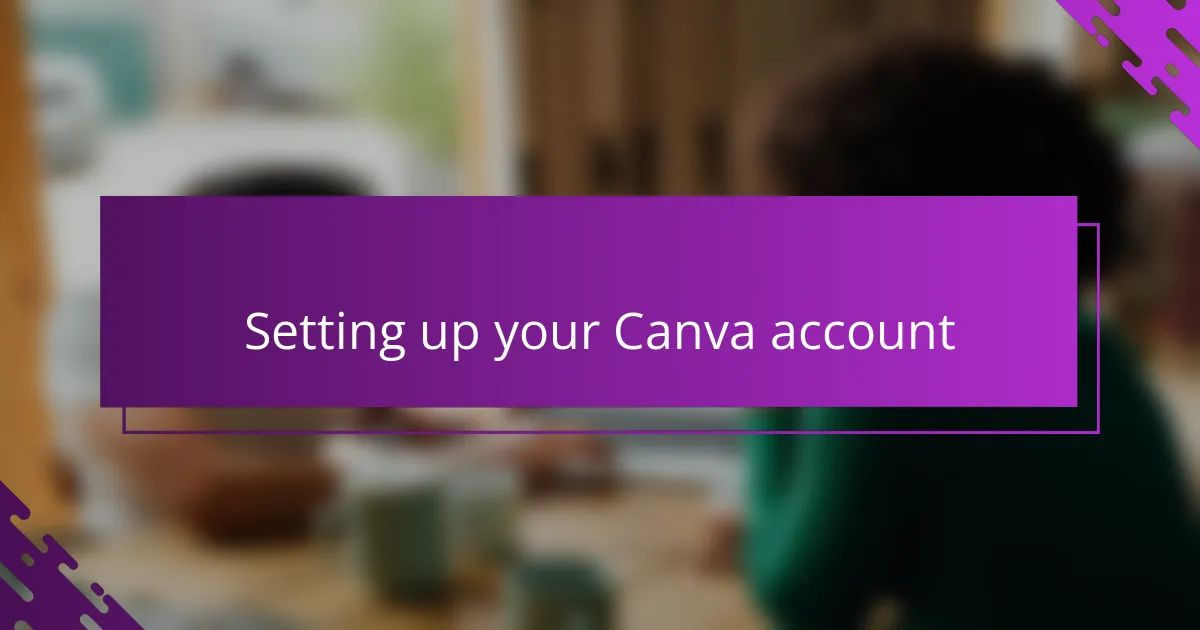
Setting up your Canva account
Setting up my Canva account was surprisingly straightforward, but what really stood out to me was how intuitive the whole process felt. I remember signing up with just my email and instantly being greeted by a clean, user-friendly dashboard. Have you ever felt overwhelmed by new software? Canva’s welcoming interface immediately put my mind at ease.
Once logged in, I took a moment to explore the templates and customization options. It was like stepping into a creative playground where anything seemed possible. Personally, I found that setting my brand colors and fonts right from the start saved me so much time later, ensuring every design stayed consistent with my blog’s personality.
What really helped me was connecting my Canva account to other platforms, like Instagram and Pinterest. This made sharing my designs effortless and felt like a natural extension of my blogging workflow. It was a small step that made a big difference in staying organized and keeping my brand presence cohesive across channels.
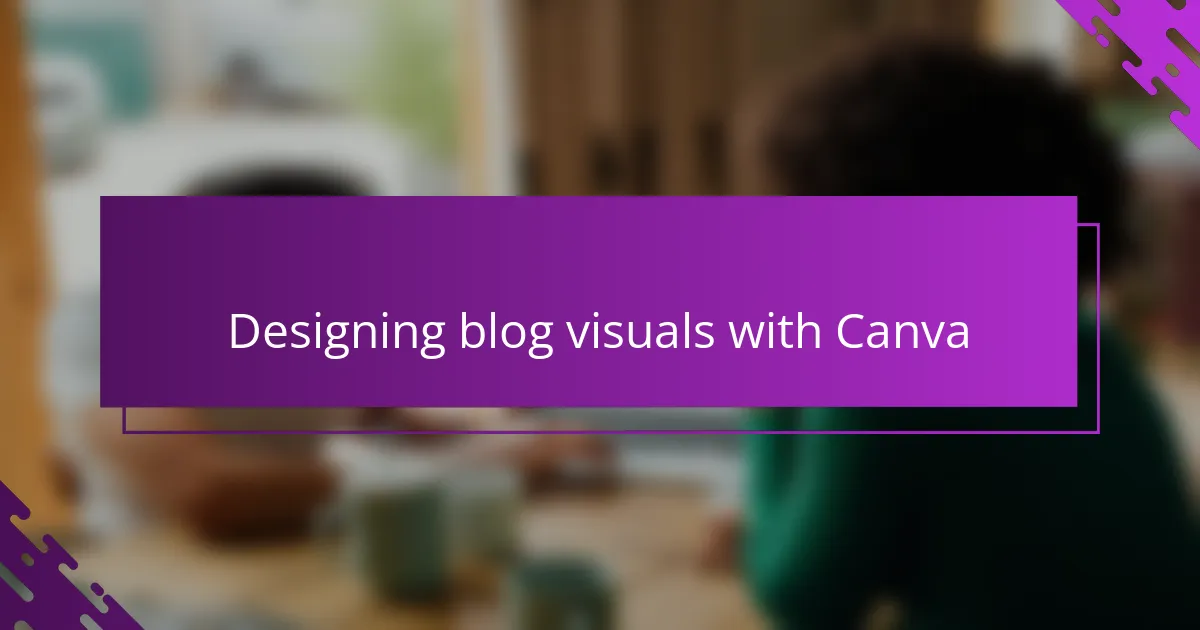
Designing blog visuals with Canva
Designing blog visuals with Canva felt like stepping into a whole new creative world. I remember my first time experimenting with their templates—it was surprisingly fun to customize colors, fonts, and images until each visual truly reflected my blog’s personality. Have you ever experienced that satisfying moment when a design finally looks exactly how you imagined? That’s the power Canva gave me.
What made the process even more enjoyable was how intuitive Canva’s tools are. I didn’t have to wrestle with complicated software or spend hours learning new skills. Instead, I could focus on telling my story visually, knowing the platform would help bring my ideas to life effortlessly. Honestly, it changed how I approach content creation, making it less intimidating and way more exciting.
Sometimes, I’d lose track of time just playing around with different layouts and graphic elements. It’s not just about making things look pretty; it’s about creating a visual language that speaks directly to my readers. When I saw my blog posts come alive with custom visuals, I realized how much more engaging and professional my content felt—and that confidence is contagious.
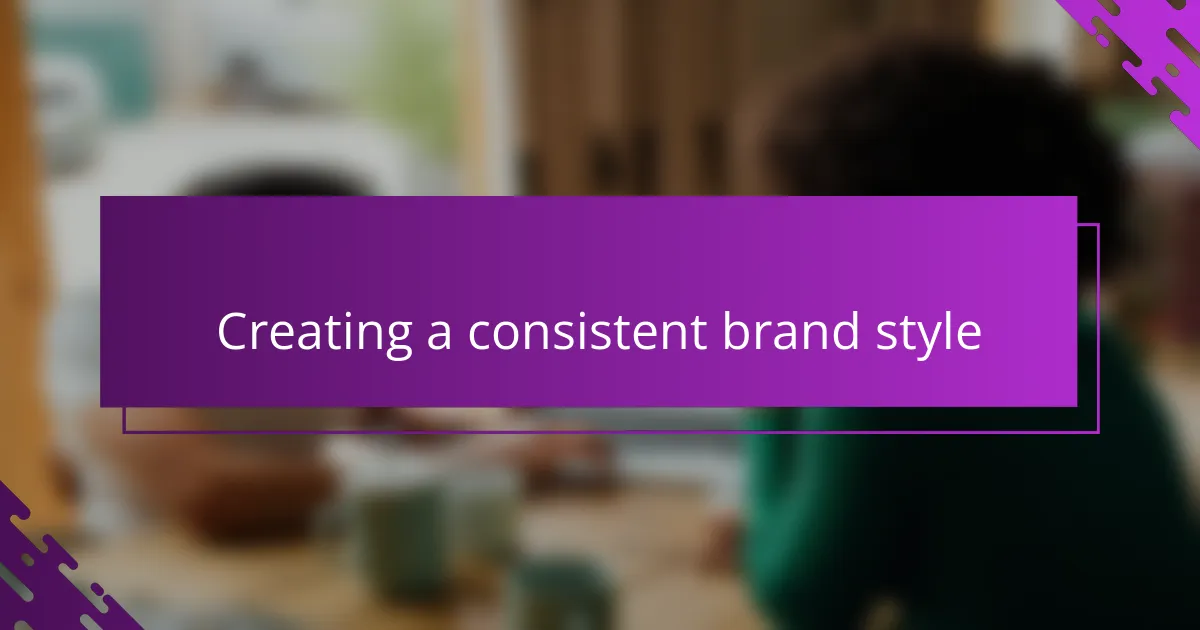
Creating a consistent brand style
Consistency in my brand style became a game-changer once I nailed down a specific color palette and font combination on Canva. Have you ever noticed how certain brands just feel familiar the moment you see their look? That’s the power of consistency, and it instantly made my blog feel more trustworthy and polished.
I also learned that keeping my design elements uniform across posts wasn’t about rigidity but about creating a visual rhythm. Every time I used my chosen colors and fonts, it felt like I was sending a little reminder to my readers: “This is my space, and it’s thoughtfully created just for you.” That emotional connection grew deeper than I expected.
What surprised me most was how much easier it became to create new content when my style foundation was set. Instead of second-guessing design choices, I could focus on storytelling and just trust that my visuals were already speaking my brand’s language. Isn’t it amazing how a solid style guide can free up your creativity like that?
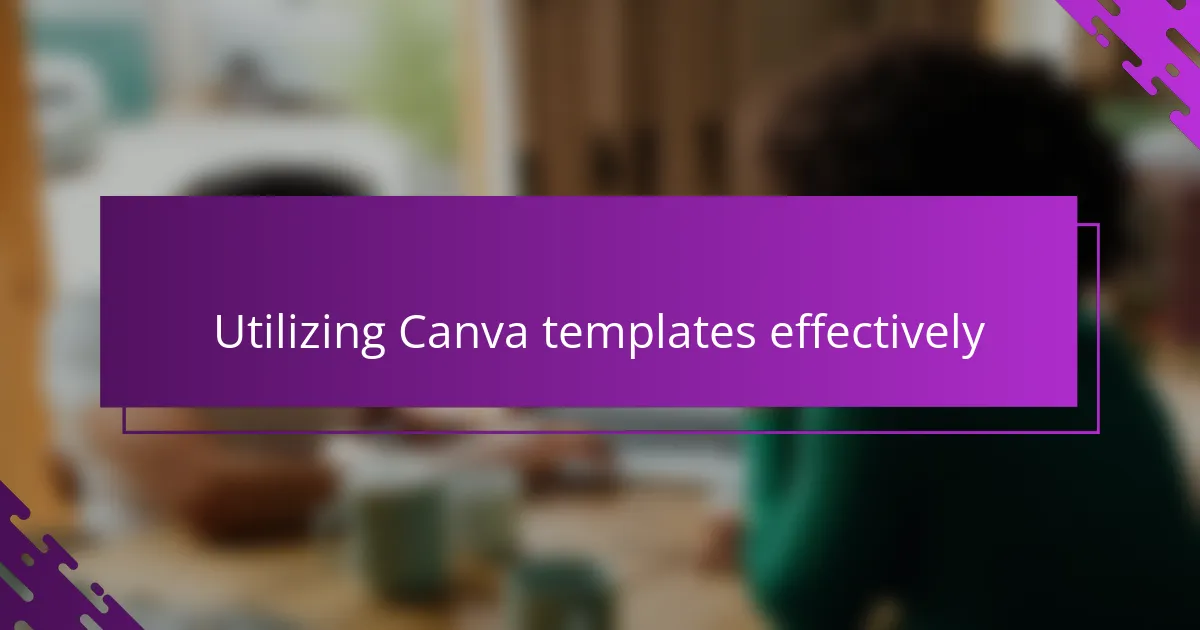
Utilizing Canva templates effectively
Using Canva templates effectively was a total game-changer for me. At first, I treated the templates as just starting points, but I quickly realized that tweaking colors, fonts, and images to fit my unique style made all the difference. Have you ever felt stuck trying to create something original? Customizing templates helped me break free from that frustration.
One thing I learned is that a template isn’t a one-size-fits-all solution—it’s more like a flexible framework. By playing around with layout options while keeping my brand’s look consistent, I was able to maintain a professional feel without spending hours designing from scratch. That balance between efficiency and personalization saved me so much time.
Another surprising benefit was how using templates boosted my confidence. When my blog visuals looked put-together and cohesive, I felt proud sharing new posts and promoting my work. Do you know that uplifting feeling when everything just clicks? That’s exactly what happened every time a template helped me tell my story visually.
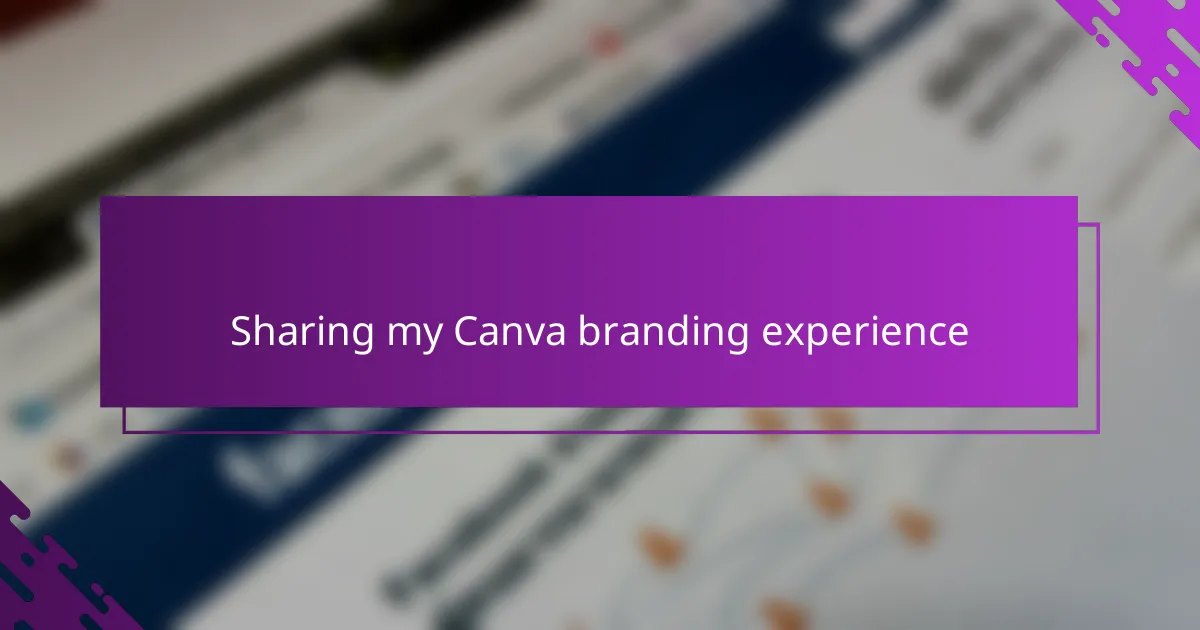
Sharing my Canva branding experience
Sharing my Canva branding experience has been nothing short of transformative for my blog. I remember the first time I created a logo using Canva’s tools—it wasn’t perfect, but seeing my vision take shape gave me a genuine thrill. Have you ever felt a spark of pride when something you made starts to feel truly yours? That’s exactly what happened to me.
What stuck with me most was how Canva made branding approachable. I wasn’t a designer, yet I could play with colors, fonts, and layouts until the style just clicked. This hands-on process helped me understand my brand’s personality more deeply, which in turn shaped how I wrote and connected with readers.
Looking back, I realize that sharing my Canva designs wasn’t just about visuals—it built my confidence and consistency in a way that felt natural and exciting. Have you experienced that moment when a small creative victory unlocks a wave of motivation? For me, Canva was that key, turning ideas into a brand I could truly call my own.
